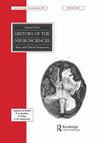通过印刷书籍中的文字和插图追溯人类奇迹神话的演变:维萨留斯及其抄袭者的案例
IF 0.3
3区 哲学
Q3 HISTORY & PHILOSOPHY OF SCIENCE
引用次数: 2
摘要
维萨里亚斯最初接受盖伦关于人类不可思议的观点。1538年,维萨里绘制了一幅图,描绘了人类的神经中枢是颈动脉的丛状末端,在这里,生命的精神转化为动物的精神,然后从大脑沿着神经分布到身体。1540年,维萨里在一次公共解剖学上用羊的头展示了这个神奇的东西(因为他最初意识到他不能在人的尸体上充分证明这一点,可能会引起嘲笑)。到1543年,维萨里完全改变了自己的观点,否认了人类中存在神奇的东西,并为自己之前没有认识到盖伦作品中的这个错误而自责。尽管如此,维萨里还是阐释了盖伦关于人类不可思议之物的概念和有蹄类不可思议之物的示意图。他想把1543年的人类奇迹图作为盖伦过度依赖动物作为人体解剖模型所导致的错误的例子。然而,尽管维萨里的意图是这样的,在一个多世纪之后,他的形象一再被盖伦主义的拥护者恶意剽窃,他们误用它作为人体解剖学的现实表现,并且通常省略了贝伦加里奥·达·卡尔皮和维萨里的相反观点。在现存的印刷插图中,对不可思议的事物的刻板印象的长期使用,为16、17世纪解剖学思想的停滞提供了切实的证据。本文章由计算机程序翻译,如有差异,请以英文原文为准。
Evolution of the myth of the human rete mirabile traced through text and illustrations in printed books: The case of Vesalius and his plagiarists
ABSTRACT Andreas Vesalius initially accepted Galen’s ideas concerning the rete mirabile in humans. In 1538, Vesalius drew a diagram of the human rete mirabile as a plexiform termination of the carotid arteries, where the vital spirit is transformed into the animal spirit, before being distributed from the brain along the nerves to the body. In 1540, Vesalius demonstrated the rete mirabile at a public anatomy, using a sheep’s head (due to his nascent realization that he could not demonstrate this adequately in a human cadaver, potentially eliciting ridicule). By 1543, Vesalius had fully reversed himself, denied the existence of the rete mirabile in humans, and castigated himself for his prior failure to recognize this error in Galen’s works. Vesalius nevertheless illustrated both the Galenic conception of the rete mirabile in humans and a schematic of the rete mirabile in ungulates. He intended the 1543 diagram of the human rete mirabile as an example of a mistake that resulted from Galen’s overreliance on animals as models of human anatomy. However, in spite of Vesalius’s intentions, for more than a century afterward, his figure was repeatedly and perversely plagiarized by advocates for Galenic doctrine, who misused it as a purportedly realistic representation of human anatomy and generally omitted the contrary opinions of Berengario da Carpi and Vesalius. The protracted use of stereotyped representations of the rete mirabile in extant printed illustrations provides tangible documentation of the stagnation in anatomical thought in the sixteenth and seventeenth centuries.
求助全文
通过发布文献求助,成功后即可免费获取论文全文。
去求助
来源期刊

Journal of the History of the Neurosciences
社会科学-科学史与科学哲学
CiteScore
1.00
自引率
20.00%
发文量
55
审稿时长
>12 weeks
期刊介绍:
The Journal of the History of the Neurosciences is the leading communication platform dealing with the historical roots of the basic and applied neurosciences. Its domains cover historical perspectives and developments, including biographical studies, disorders, institutions, documents, and instrumentation in neurology, neurosurgery, neuropsychiatry, neuroanatomy, neurophysiology, neurochemistry, neuropsychology, and the behavioral neurosciences. The history of ideas, changes in society and medicine, and the connections with other disciplines (e.g., the arts, philosophy, psychology) are welcome. In addition to original, full-length papers, the journal welcomes informative short communications, letters to the editors, book reviews, and contributions to its NeuroWords and Neurognostics columns. All manuscripts are subject to initial appraisal by an Editor, and, if found suitable for further consideration, full- and short-length papers are subject to peer review (double blind, if requested) by at least 2 anonymous referees.
 求助内容:
求助内容: 应助结果提醒方式:
应助结果提醒方式:


